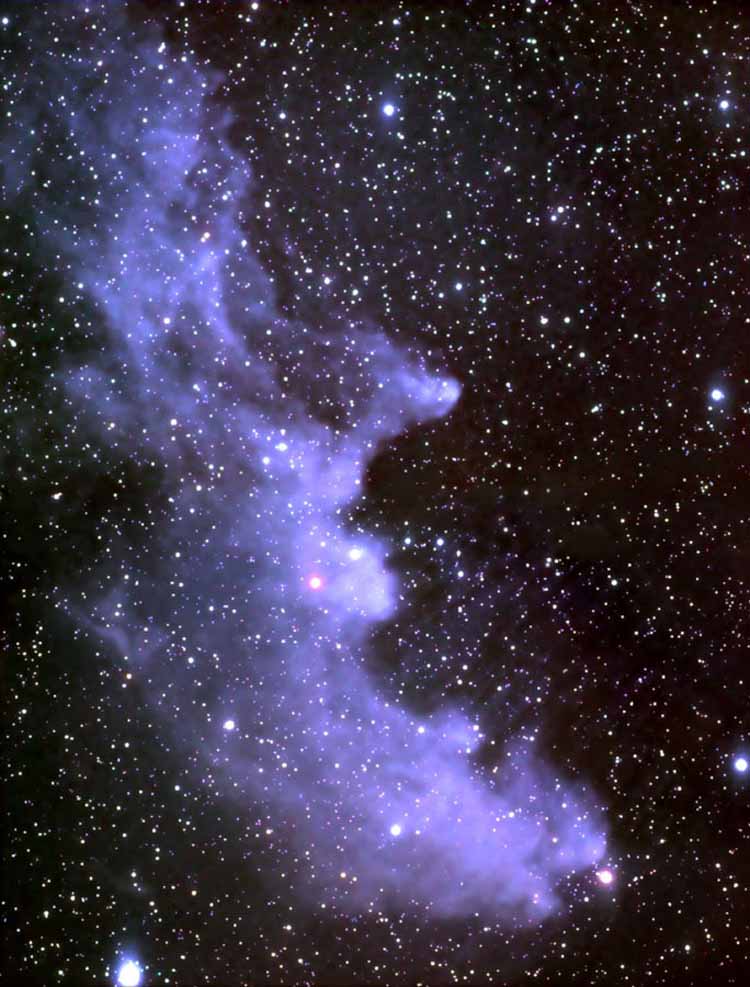How Do Emission and Reflection Nebulae Differ
Why do reflective nebulae often appear blue while the stars inside of them appear to be more red. Generally these nebulae appear reddish.

Emission Dark And Reflection Nebulae Video Lesson Transcript Study Com
How do the particles in a reflective nebula differ from those in an emission nebula.

. The deep-red color originates from ionized hydrogen gas Hα predominantly behind the nebula and caused by the nearby bright star Sigma Orionis. An emission nebula is a cloud of ionized gas. An example of a Reflection Nebula is Witch-Head Nebula in the constellation of Eridanus.
Temp of Suns core and photosphere. The visible surface of the sun the lowest level of atmosphere 1510⁷ K and 5800K. 2 on a question How do emission and reflection nebulae differ.
For absorption and re-emission the re-emission is diffuse that means that the relative angle of the photons is random. Light from stars inside of or near the nebula reflecting off of gas particles. A quantity of gas is illuminated by nearby hot luminous stars of spectral types O or B.
The colors are manifestation of their compositions. Emission nebulae are composed of hydrogen glowing due to the intense radiation of hot stars inside it. You are asking how the atom will decide whether it will reflect or absorb.
Emissionnebulae are clouds of ionized gas that allow red blue and violetlight through. These can be among some of the most colorful objects in the sky. Particles tend to be dust rather than gas in a reflective nebula.
Reflection nebulae on the other hand do not emit light on its own but instead just reflects the light of nearby stars. Reflection Nebulae are clouds of dust which are simply reflecting the light of a nearby star or stars. Create their own light due to reactions with radiation and light from another star.
How do the particles in a reflection nebula differ from emission. The main difference between an Emission Nebula and a Reflection Nebula is that Emissions create their own light whereas a Reflection is lit up by reflecting light that hits it. Just select light because they are mostly dust Emission nebula.
Glow due to being blasted by light and radiation from a nearby massive star. Blue light from star js more easily scattered by the particles in a reflective nebula. Particles are duat rather than gas.
Interactions with light Emission and reflection nebulae has been differ through the interactions with light cause reflection nebulae has been contain the lights. What is the photosphere. How do emission and reflection nebulae differ.
Nebulae of different kinds emission dark or reflection An emission or bright nebula is seen if what conditions are present. Emission nebulae are typically red and reflection nebulae blue. Chromosphere and Corona temp density.
The Horsehead nebula is a complex star forming region 1200 light years from Earth toward the constellation Orion and consists of emission reflection and dark nebulae. Its three types are emission dark and reflection nebulae. Other types of nebulae do.
The nearby star or stars are not hot enough to cause ionization in the gas. -how is an emission nebula different than a reflection one -why do cepheids size oscillate. Dark nebulae such as the Horsehead Nebula are so dense that they block light from other sources such as background emission nebulae reflection nebulae or other stars.
A nebula is a cloud of gas or dust in space that reflects light coming from nearby stars. The most common source for ionizations are high energy photons emitted from a nearby star. Only glow because they are reflecting light from a nearby star because it is made mostly of dust.
For reflection the reflected light is always specular meaning a mirror image that means that the photons relative angle is kept the same. Why do reflective nebulae often appear blue.

Emission Dark And Reflection Nebulae Video Lesson Transcript Study Com

Reflection Nebula Facts The Planets

Emission Dark And Reflection Nebulae Video Lesson Transcript Study Com
No comments for "How Do Emission and Reflection Nebulae Differ"
Post a Comment